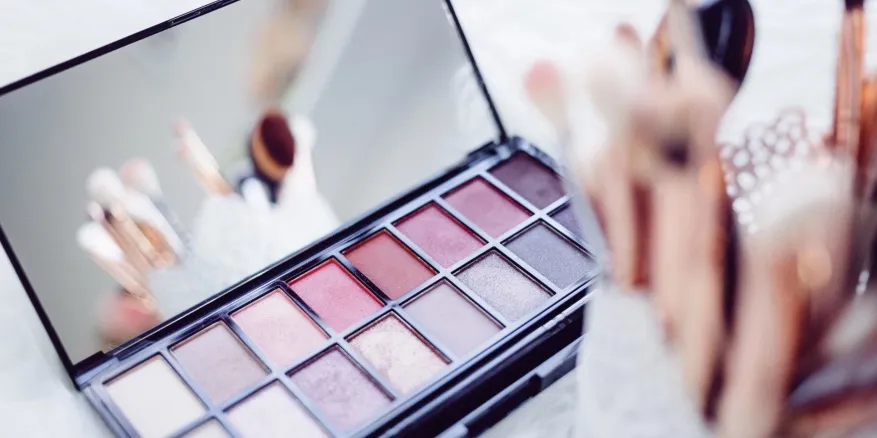With COVID-19 massively impacting the eCommerce industry, everyone is trying to determine how to respond as we find a new normal. On Tuesday, industry experts such as Gary Vaynerchuk and Marisa Thalberg joined for CommerceLive’s virtual conference, “New eComm playbooks for the new normal.” Attendees learned how to manage the current rise of complexity and how to plan for a post-pandemic world across various affected industries.
When it comes to shifts in buying trends and eCommerce tactics, the Beauty and Personal Care industry has faced unique challenges in response to this pandemic.
Those in the beauty and personal care industry found particular value in “Back to Basics: What to do When Consumers Shift from Luxury to Necessity.” During this executive roundtable moderated by Pacvue Co-Founder and President Melissa Burdick; Ekta Chopra, VP of Digital at e.l.f Cosmetics and Sri Rajagopalan, former SVP at Revlon, Johnson & Johnson and Co-Founder of Zenfuel, discussed the challenges facing the beauty industry, how to respond to COVID-19, and what to expect for the future of the industry.
For those that missed this event, here are some of the key takeaways for eCommerce in the beauty, personal care, and apparel industries:
What have been the biggest challenges as you’ve grown your eCommerce business?
Even before COVID-19, companies in the beauty industry faced challenges as they began to adapt their brick and mortar model for eCommerce. Some of the main challenges discussed during the roundtable were:
- Lower ASPs: With a lower average selling price for common beauty goods, eCommerce advertising must be carefully targeted to ensure a strong ROAS and maximize total sale value.
- Building Brand Equity: According to Sri Rajagopalan, “industry leaders mistake eCommerce as a sales channel and not as a brand building vehicle.” Ekta Chopra agrees that eCommerce should be seen as a more holistic retail channel where you can create amazing experiences.
- Owning the Path to Purchase: As with many industries, beauty retailers must find ways to capture consumer attention through strong marketing and advertising across their eCommerce channels.
What’s going on with the beauty industry since COVID hit? What are the shifts to consumer behavior and demand during this time and how have you pivoted to deal with these shifts?
Since the pandemic began, eCommerce penetration in the health and beauty industry has increased 32% from last year, according to Profitero. While the overall industry has seen a major uplift, the shift in specific buying behaviors has also been telling.
The top beauty items last month primarily focused around DIY beauty treatments as consumers were unable to visit hair and beauty salons. “Power pampering” products such as bath salts and essential oils also saw a bump as consumers seek peace and relaxation amidst stressful times. However, consumers are limiting the purchase of luxury items during this work-from-home period as items such as lipstick and teeth whitening see a decrease.
For those brands who are struggling with digital right now – will they be relevant during this time? How can they think about being agile and what do they need to do?

According to Rajagopalan, while the beauty industry has slowly adopted eCommerce over the last five years, COVID-19 is now the true wakeup call to take eCommerce seriously.
Chopra continued, “We’ve been on Amazon for 4-5 years, but we’re still learning.” e.l.f. Cosmetics focuses on building a consistent brand across every touchpoint. On Amazon, that means using A+ content, having the right products to display, bundling, etc. What they were already seeing before COVID was that their digital strategy was paying off, so now they’re in a position to double down.
In terms of agility, eCommerce professionals need to be able to understand buying trends and respond to consumers. For most advertisers and marketers, all of their content and messaging plans went out the window when the pandemic hit. Everyone is in the same boat in this case. Now it is all about reacting to things in time with more raw, authentic messaging. This means more videos and more storytelling.
What does the world look like for beauty brands after COVID-19?
The new normal for beauty brands after COVID-19 will see some significant headwinds. Many traditional beauty retailers will close brick and mortar stores as consumers continue to rely on eCommerce. Our panelists predict digital spend will increase 3-5x over the next 12 months.
When brick and mortar shuts down, you have to go somewhere else because you’re losing distribution. You have to go digital. There are so many eCommerce channels, it is important to approach these channels in a way that allows you to test and optimize your strategy as you go.
Social Media and Influencers
As part of this new digital strategy, Chopra recommends testing different social media channels and working with influencers to boost your brand equity. e.l.f Cosmetics even won an award for their innovative strategy on the social network TikTok.

“TikTok is a game changer. We started with a challenge, created a campaign around it that went viral – celebrities, millions of views – then we created a music video. What we’ve learned is that it’s an opportunity for product launch, influencers reviewing, and sales skyrocketing.”
This worked particularly well at e.l.f Cosmetics because their CMO has been actively participating on TikTok and could see the trends and potential benefits already forming on the platform. As Ekta Chopra says, “Every CMO should be on TikTok!”
Augmented Reality
Turning to tactics like virtual try-on, augmented reality will have a huge effect on the eCommerce side of the beauty industry. e.l.f Cosmetics launched AR on their site last October and conversion rates doubled when a consumer used the AR technology.
In fact, when we asked the other speakers at CommerceLive for their predictions about the future of the space, Jason Goldberg, Chief Commerce Strategy Officer at Publicis, he was quick to mention Augmented Reality and provided us with some of the major AR tools to keep an eye on:
- L’Oreals ModiFace has been a leader in virtual try-on
- Coty’s Magic Mirror is an interesting “blended reality” beauty experience currently in the CoverGirl store in New York City
- Sephora Virtual Artist and Ulta Glamlab are also experimenting.

This is only the beginning of how the beauty industry will likely experiment over the coming months and into next year, and while some of these trends may be specific to this category, one thing was clear from CommerceLive: we’re about to see a period of investment in eCommerce and digital experimentation like never before.













